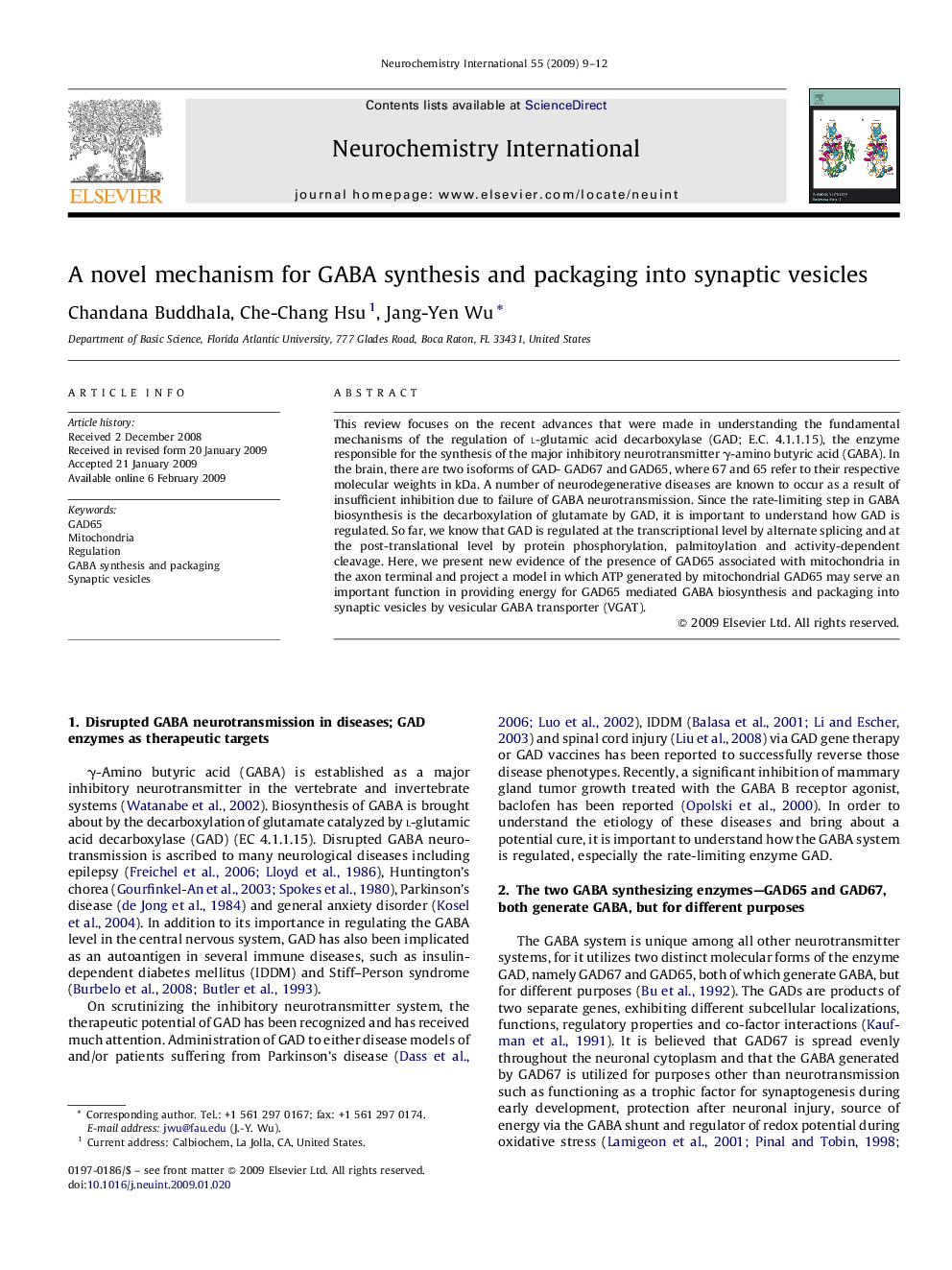| Article ID | Journal | Published Year | Pages | File Type |
|---|---|---|---|---|
| 2201465 | Neurochemistry International | 2009 | 4 Pages |
This review focuses on the recent advances that were made in understanding the fundamental mechanisms of the regulation of l-glutamic acid decarboxylase (GAD; E.C. 4.1.1.15), the enzyme responsible for the synthesis of the major inhibitory neurotransmitter γ-amino butyric acid (GABA). In the brain, there are two isoforms of GAD- GAD67 and GAD65, where 67 and 65 refer to their respective molecular weights in kDa. A number of neurodegenerative diseases are known to occur as a result of insufficient inhibition due to failure of GABA neurotransmission. Since the rate-limiting step in GABA biosynthesis is the decarboxylation of glutamate by GAD, it is important to understand how GAD is regulated. So far, we know that GAD is regulated at the transcriptional level by alternate splicing and at the post-translational level by protein phosphorylation, palmitoylation and activity-dependent cleavage. Here, we present new evidence of the presence of GAD65 associated with mitochondria in the axon terminal and project a model in which ATP generated by mitochondrial GAD65 may serve an important function in providing energy for GAD65 mediated GABA biosynthesis and packaging into synaptic vesicles by vesicular GABA transporter (VGAT).
